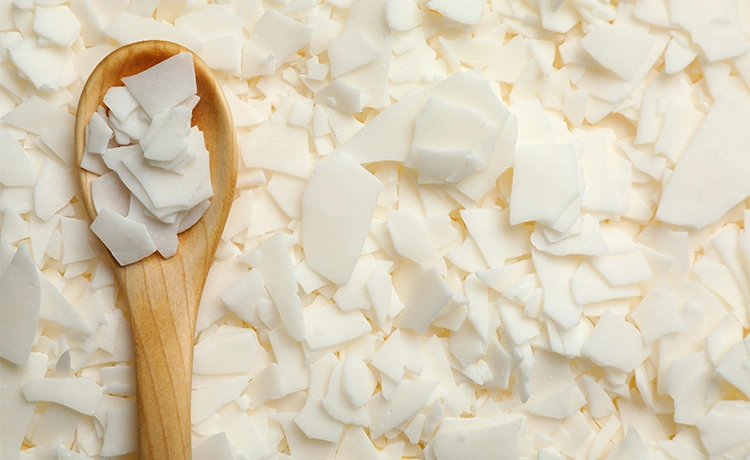Choosing Waxes for Scented Candles

08/11/2023
Crafting the perfect scented candle involves many choices, but perhaps none as foundational as selecting the right candle wax. The wax determines many of the candle’s characteristics, from burn time to scent throw and even appearance. Let’s guide you through the diverse world of candle waxes to make the best decision for your creations.
1. Paraffin Wax
Overview : A byproduct of petroleum refining, paraffin wax is a prevalent choice in candle making.
Pros : It boasts a high melting point, ensuring a longer burn time and is quite beginner-friendly.
Cons : Potential soot release during burning and environmental concerns due to its petroleum origin.
2. Soy Wax
Overview : Derived from soybean oil, soy wax has garnered a large eco-conscious following.
Pros : Renewable and burns cleaner with minimal soot. Offers an extended burn time.
Cons : Scent throw might not be as robust as with paraffin.
3. Beeswax
Overview : Produced by honeybees, beeswax is among the most ancient materials for candle making.
Pros : Features a natural, pleasant aroma, burns longer and cleaner than many waxes, and emits air-purifying negative ions.
Cons : Typically more expensive and has a naturally yellow hue that might influence candle color.
4. Coconut Wax
Overview : Sourced from coconut oil, this wax is relatively new but increasingly popular.
Pros : Clean burning, powerful scent throw, and a sustainable choice.
Cons : Often pricier and less readily available than older, more established waxes.
5. Palm Wax
Overview : Derived from palm oil, it’s cherished for its unique crystalline finish.
Pros : Clean burn with potential for textured candle designs.
Cons : Environmental concerns related to palm oil production. Always source sustainably.
6. Rapeseed Wax
Overview : Extracted from rapeseed oil, it’s a biodegradable and renewable source.
Pros : Excellent for container candles, offers a clean burn, and is often used in blends to improve consistency.
Cons : Softer than some waxes, making it less suitable for molded candles.
7. Sunflower Wax
Overview : Made from sunflower oil, this is another eco-friendly alternative.
Pros : Harder consistency than soy or rapeseed, making it great for blends. Burns cleanly.
Cons : Might not have as potent a scent throw as other waxes on its own.
8. Blended Waxes
Overview : Combinations of two or more waxes, such as paraffin-soy or coconut-rapeseed.
Pros : Typically unites the advantages of included waxes, such as robust scent throw coupled with a clean burn.
Cons : Blend-specific characteristics can vary.
Selecting the correct wax goes beyond just aesthetics—it influences the very essence of your candle. Whether your priorities lie in sustainability, scent throw, appearance, or a balance of factors, comprehending the distinct attributes of each wax ensures your scented candles align with your vision and values.
